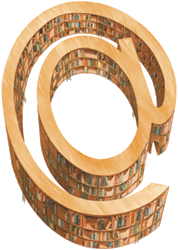Public access to the SBN catalogue (OPAC)
The SBN Catalogue is the collective catalogue of the libraries participating in the National Library Service; its purpose is to provide services to users.
It includes the bibliographic descriptions and locations of books and other types of documents catalogued according to their specific peculiarities: ancient (printed monographs from the 15th century to 1830, conventionally limit for the manual printing), modern (monographic publications from 1831 up to the present and periodical publications from any date; they are included in the modern bibliographic descriptions of textual documents, but also, as a percentage increasing over the years, sound and video recordings, electronic archives cataloged without specificity, etc cataloged without specificity), music (music manuscripts, printed music and librettos), graphic, maps, audiovisual.
The management system (Index) is reserved to library activities, but since 1997 the SBN catalogue is accessible to the public through its OPAC (On-line Public Access Catalogue), which allows the public at large to access the information held in the catalogue, with user-friendly and yet thorough search modalities, and to use related services.
The core of the SBN OPAC is a database resulting from the weekly processing of the Index contents, organized so as to provide a great many access points (unthinkable and unnecessary in the management system), also combined together. In order to guarantee interaction with other bibliographical systems, the Index adopted the Z39.50 international standard (and later also the ISO 23950 standard) for the searching and retrieving of information, particularly bibliographic information.
Various user interfaces were built upon over time.
The current version of the OPAC SBN is completely built on open source softwares; in particular, the new OPAC uses the Lucene/SOLR search and indexing engine, which ensures high-performance searches and allows the ‘faceted’ navigation of results.
Every Z39.50 client can access the current OPAC SBN target. A Gateway Z39.50 of the Library of Congress is at the users’ disposal.
When querying the OPAC SBN system, several national and international metaopacs operate through a mapping between their search fields and the search fields of one of the ICCU web interfaces.
SBN catalog can also be consulted through the OPAC SBN app available for Android phones and tablets and iOS.
For information: Maria Cristina Mataloni, Egidio Incelli
